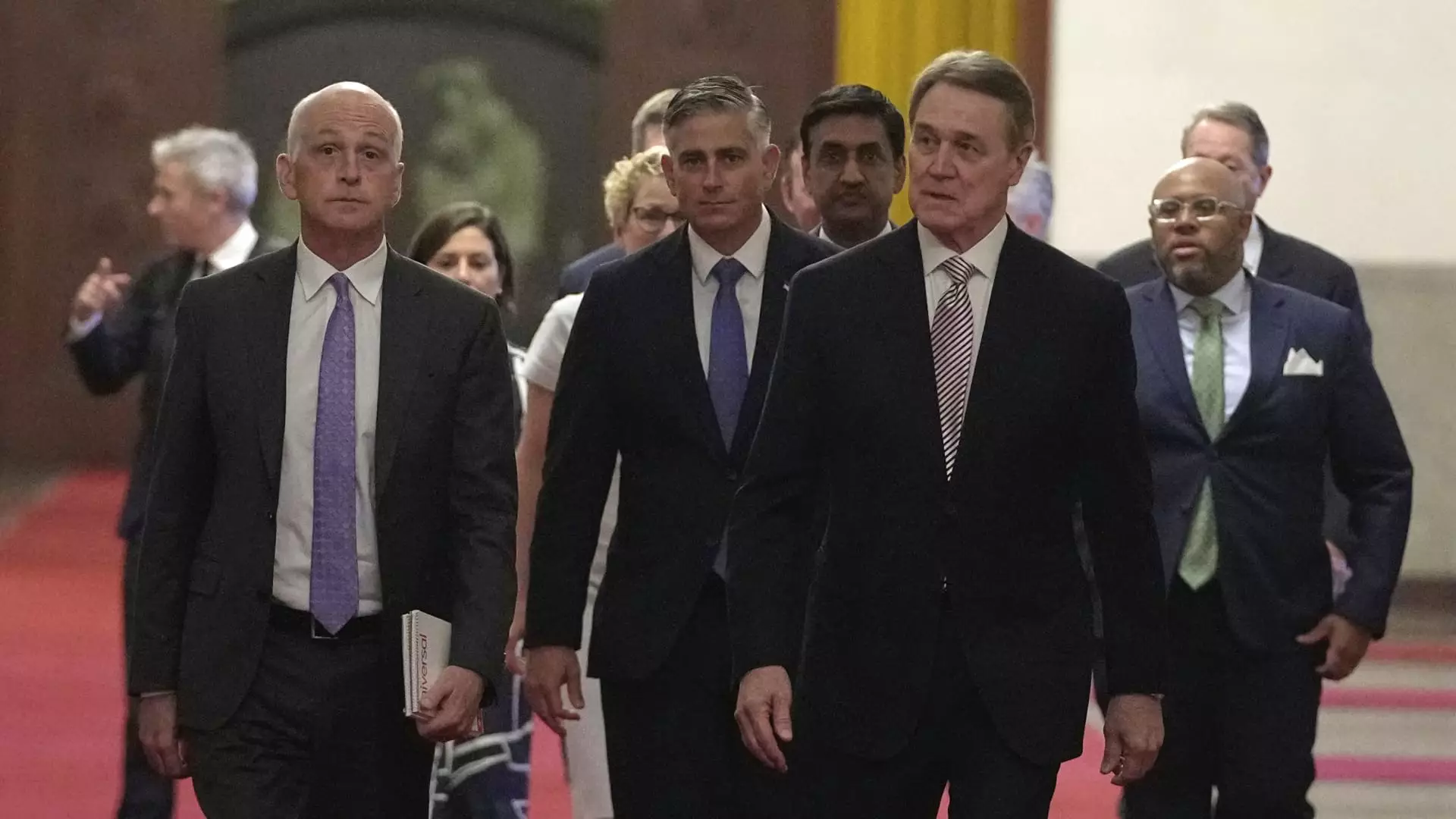In a landscape marred by decades of mistrust and strategic rivalry, a recent visit by U.S. lawmakers to China offers a glimmer of hope that the superpowers might finally recognize the importance—and urgency—of re-establishing meaningful dialogue. Yet, beneath this seemingly positive gesture lies a complex web of historical grievances, policy contradictions, and national interests that threaten to derail any genuine rapprochement. Far from being a simple diplomatic gesture, this visit signals an overdue recognition that both nations need each other more than ever, especially as global instability intensifies.
The significance of this trip cannot be overstated. Since 2019, formal congressional visits to China had largely ceased, mirroring the deepening fissures driven by trade disputes, technological restrictions, and geopolitical tensions over issues like Taiwan and the South China Sea. The pandemic’s onset only accelerated this disengagement. Now, with both countries looking for footing amid the chaos, there is an undeniable necessity—not merely for transactional diplomacy but for building a foundation of mutual understanding rooted in realism and shared interests.
Why Engagement Is Not Optional—It’s a Moral and Strategic Imperative
The broader global context underscores that isolating China in an increasingly interconnected world is a perilous mistake. It risks escalating the very conflicts that threaten economic stability and regional peace. The Biden administration’s acknowledgment of the need for a mature, nuanced approach is an essential step, but words alone are insufficient. Genuine engagement requires challenging the status quo—questioning policies that only deepen divisions or provoke unwarranted fears.
A bipartisan delegation’s effort signals recognition that cooperation, even amidst disagreement, is possible and necessary. While critics may dismiss such visits as symbolic or superficial, they fail to grasp that diplomacy is built on incremental, continuous exchange. It is through dialogues—especially difficult ones—that trust can slowly be cultivated. Otherwise, the alternative is a dangerous spiral of miscalculation, arms races, and regional destabilization. Disengagement, after all, is unlikely to produce peace; rather, it breeds suspicion and hostility.
Addressing the Core Issues Without Sugarcoating
Many of the contentious issues that define U.S.-China tensions—trade policies, technology restrictions, military presence, and territorial claims—are intertwined with fundamental national interests. Condoning denial or avoidance of these issues only prolongs conflict. Instead, constructive engagement demands confronting these problems honestly, with an emphasis on transparency, accountability, and mutual respect.
For instance, the debates over TikTok, semiconductor restrictions, and Taiwan are symptomatic of deeper structural conflicts. They reflect fears—justified or exaggerated—of losing strategic dominance or sovereignty. Recognizing these concerns does not mean capitulation but rather acknowledging that a durable relationship requires balancing national interests with global stability. That balance hinges on both sides adopting a pragmatic perspective, moving beyond zero-sum thinking.
The presence of U.S. lawmakers in China demonstrates that diplomatic channels remain vital—although they must evolve from performances of obligatory politeness into arenas for genuine problem-solving. Engaging China on multiple fronts and establishing clear, enforceable frameworks for cooperation could mitigate risks and create space for compromise.
The Liberal Imperative: Urging for a Balanced and Compassionate Approach
A liberal worldview calls for pragmatic realism—embracing dialogue and cooperation while fiercely protecting human rights, international norms, and democratic values. It recognizes that the path forward isn’t about capitulation but about crafting a sustainable relationship that respects differences but prioritizes peace, shared prosperity, and global well-being.
The current geopolitical climate demands that policymakers reject naive optimism and instead pursue a middle path—holding firm on core principles, like human rights and sovereignty, without falling into the trap of confrontation for its own sake. It’s crucial that engagement remains rooted in the understanding that diplomacy, even with a rival as complex as China, requires patience, resilience, and an unwavering commitment to mutual benefit.
This cautious yet proactive stance may be uncomfortable for advocates of overly confrontational policies, but history shows that sustainable progress stems from consistent, sincere engagement. Repeated costly conflicts and diplomatic standoffs prove that ignoring the importance of dialogue only deepens the wounds and emboldens hardline factions.
The recent U.S. legislative visit to China offers an opportunity—long overdue—to reframe a fraught relationship into a constructive partnership, even if imperfect. It’ll require more than symbolic gestures; it demands relentless diplomacy, pragmatic compromise, and the genuine recognition that the future of a stable, prosperous world depends on whether these two giants can learn to listen, understand, and walk away from the brink.

